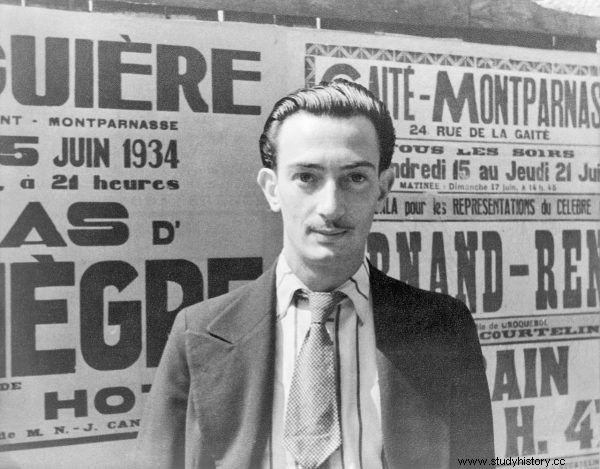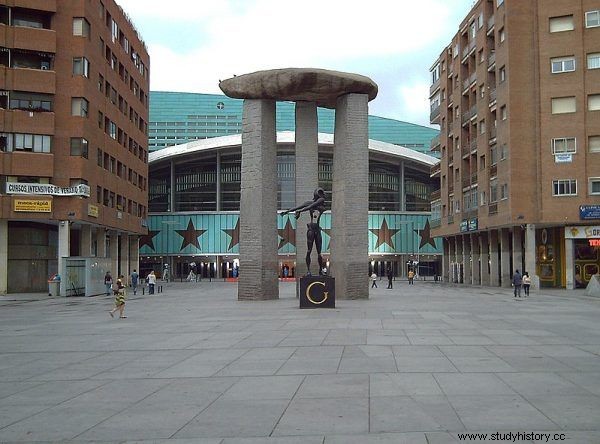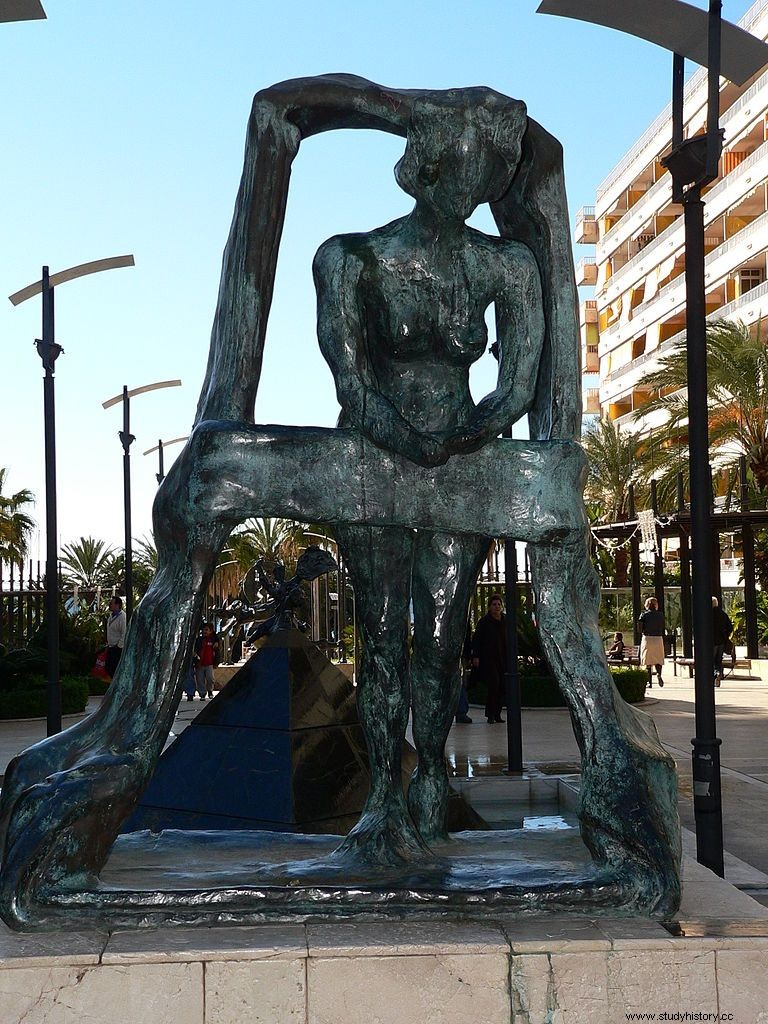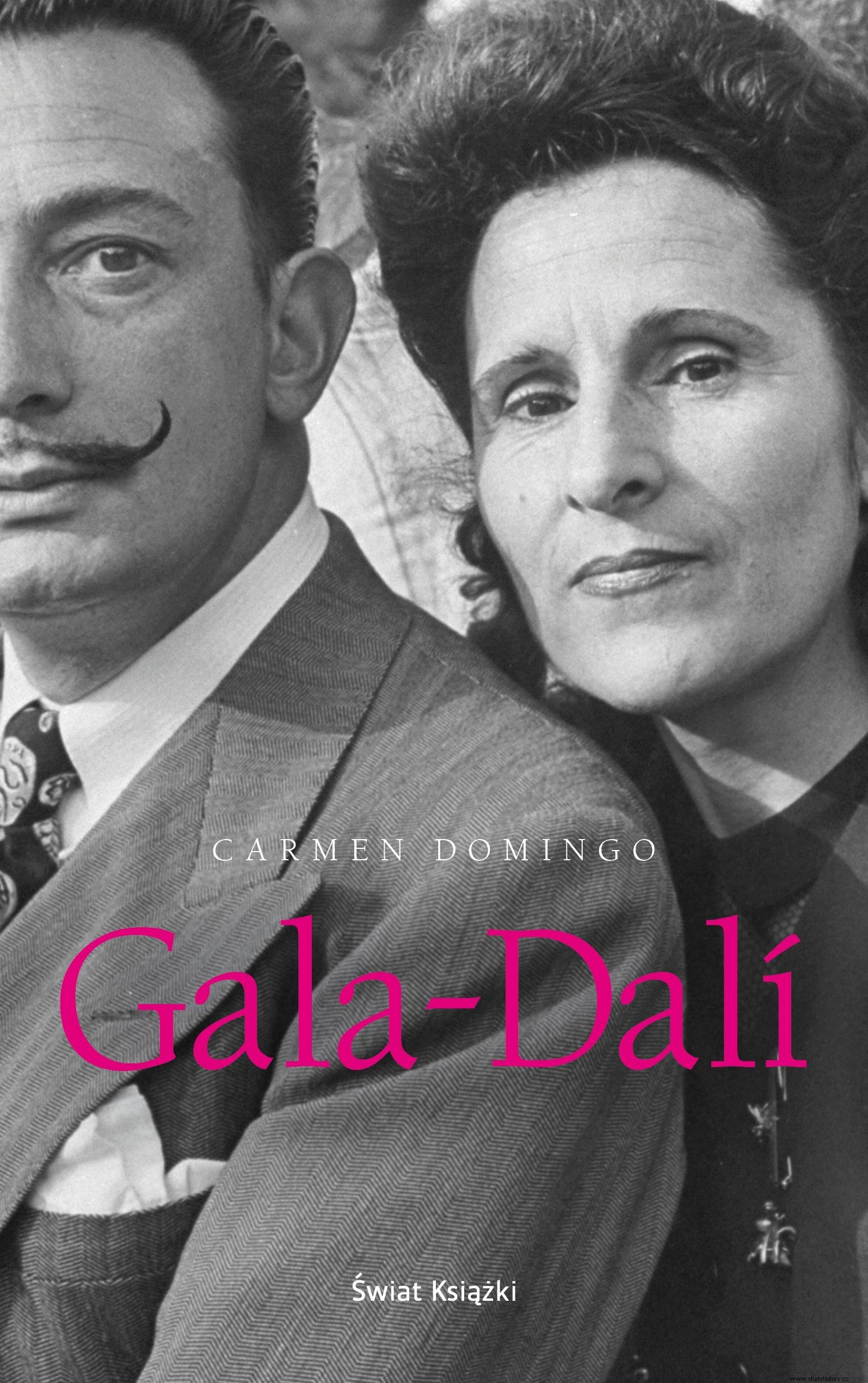Before he met her, he spent time imagining excrement-ridden owls on the heads of his interlocutors. She became his lover, muse, reviewer and manager. But she was driven not only by the love of art. Building its legend, she also strove for her own. Successful?
In the summer of 1929, Salvador Dalí was just a promising young artist. The 25-year-old Catalan has already had his first successes. A few months earlier, in June, the Andalusian Dog was born , the fruit of his collaboration with Luis Buñuel. This first surreal film both shocked and delighted audiences, only paving the way for experimental cinema.
The beginner artist hosted the cream of the then avant-garde. The social life did not go well, however, and this was due to the host himself. Dalí, who found new amusement in imagining scenes ridiculing his interlocutors, burst out laughing uncontrollably every now and then.
It was impossible to talk to him, work on the next film and pictures was lame, and the guests started nodding their heads dubiously. A little more, and instead of genius material, they'd see a disturbing psychopath in him.
Dali's passion for excrement was also disgusting . The Catalan consistently included them in his works. In the summer of 1929, he presented, for example, the painting "Gloomy Fun", in which one of the characters has visible stains on his pants. It turned out that faeces, even for Surrealists, is a taboo subject. "I could show blood" - The situation was summed up by the artist himself - “I could add a bit of shit to her. But I had no right to expose the shit itself ”.

In this portrait, taken in the year of her civil marriage to Gala (1934), Dali looks surprisingly "normal". But these are only appearances - even then he was known as an exceptional eccentric.
Cure insanity
It was then that Dalí met Gala, or rather:Deacon Jelena Dmitrievna (although she had not used this name for a long time). This petite Russian woman, a decade older than him, came to Cadaqués with the French poet Paul Éluard, whom she had married twelve years earlier. The eccentric Catalan, dressed with exaggerated care and laughing hysterically, did not initially win her sympathy.
Towards Salvador, as writes in the latest book "Gala-Dalí" by Carmen Domingo , she was only pushed by ... her own husband. Like the others, he could see that Gala had made a great impression on the artist. By encouraging his wife to contact him, he hoped that by doing so, he would help Dali break the creative impasse. Anyway, he was used to sharing it with others. Not only did he accept Gala's affairs, but sometimes he even indirectly participated in them, eagerly watching Gala in bed with "the third one".
What was the effect of the rapprochement between Gala and Dalí? "She became for him a character like Gradiva from a short story by Wilhelm Jensen, a girl who restores the sanity of archaeologist Norbert Hanold " - wrote about its influence Gwynne Edwards, a researcher of Spanish theater and cinema. "She cut me off from my crime and healed my insanity," Dalí himself said - "The symptoms of hysteria disappeared one by one as if by magic, I was again the master of smiles, laughter and gestures."
But Gala was also fascinated by the genius she saw in the lost artist. Or maybe she saw in him a chance for a prosperous life? Be because be, along with Éluard, were constantly struggling with financial difficulties. She also knew them from childhood. Meanwhile, Dalí had the potential that could translate into fame and money…
Muse, lover and manager
Regardless of the reasons that drew them to each other, the Gala-Dalí duo proved to be extremely successful. They spent over fifty years together until Gala's death in 1982. In 1934, they got married, although they treated their relationship quite freely. Neither she nor he placed much emphasis on marital fidelity. Especially since Salvador, who was most satisfied with the means of masturbation, was unable to meet the needs of his sexually open wife. What kept them together, however, was a joint project, that is ... Dalí himself. In its creation, Gala turned out to be an artist equal to the legend of surrealism. Such words, addressed to her husband, puts in her mouth Carmen Domingo in the book "Gala-Dalí" :
I agree, I can be an artist without creativity. But I am an artist, no one can doubt that. You just have to wait to the most complex of my works, that is you , has become a widely admired genius.

Gala was right to expect Dali to be known someday. There is even a square named after the artist in Madrid.
Indeed, Gala has invested a lot of her own work and effort to turn a promising but fearful and insecure artist into a symbol of genius - and even during his lifetime! She had a care for him that went far beyond being a "girl-muse." She was not and did not want to be just a passive inspirer, thanks to whom (although independently of her) creative inspiration appears. This is how the scale of her involvement (and even remarkable precaution!) Is described by the journalist and art critic, Zygmunt Korus:
Gala took care of the painter's financial background - she was an impresario and press spokesman for him. In addition, a model, hostess, inspirer, copyist, prompter and teacher. Its sphere of influence was expanding , and finally it covered his whole life:from the mundane, such as collecting canvases and painting accessories, to arranging exhibitions, sponsors and other promotional campaigns.
She energized, cheered and stimulated the artist - intellectually and sexually. She did not want to be a domestic hen (she cooked terribly!) - she is a woman of action, eager for the fruits of culture and wealth; she was, after all, the source of his genius. This took on a bizarre form over time. In the US, seeing the great demand for her husband's works, Gala constantly made him paint .

The gala has been portrayed many times by Salvador, not only on canvas. The photo shows the sculpture entitled "Gala in the window", standing in the Spanish city of Marbella.
Dali without Gala?
Dali fully appreciated the constant help and encouragement that came from his wife. He put her on a pedestal. “Only one being has reached the fullness of life, a picture comparable to the serene excellence of the Renaissance. This being is my wife Gala, whom I was wonderfully lucky to choose, ”he wrote.
But his worship did not stop there. He was able to recognize her contribution to his own work. So much so that began to sign his works:Gala-Dalí . This signature, Carmen Domingo suggests, was meant to signify the artist's understanding that "he would not exist without his twin".
This sentence is shared by the writer and translator Herbert Genzmer. "Without her, it would have become another psychopathological case, which she herself was afraid of when she saw his paintings for the first time," she comments. Korus adds that Dalí might just get weird and plunge completely into mental illness.

Gala guided her husband and kept him closer to reality. She was also, perhaps, the only one, to stop him from taking careless steps. His colleagues understood this, and therefore, when at some point Salvador began to include fascist symbols in his works, a group of surrealists asked Gala for help. It was she who also inhibited his fascination with Hitler, which was incomprehensible to others and Nazism.
Modern businesswoman and Action Hero
But, one might ask, what did Gala herself get out of it? After all, many descriptions left by her contemporaries show that she was a strong woman who could have her own ambitions. She was well-read and talented, and was able to gain a position in the surrealist environment that other women could only dream of. All the artists she came into contact with appreciated her opinion and opinions and even turned to her for advice. Only André Breton, the Pope of Surrealism, hated her, probably because he himself had an intolerable personality. This independence aroused considerable suspicion in the mid-twentieth century. As Gala herself explains in the literary version:
I speak, give opinions, comment, suggest ... as the only one, that's why they look at me with dislike, that's why they misinterpret my desires, that's why they are afraid of me, they think that something is wrong he hides behind it, because they do not understand that there is only Gala behind Gala.

In 1934, Dali was among the greatest avant-garde artists of his era, such as photographer Man Ray. A few years earlier, before he met Gala, he evoked much more mixed feelings.
You could say that for Gala, a relationship with a genius was a way to live life to the fullest. Thanks to him, she had an abundance. She could succumb to her whims and addiction - she was an avid gambler. But, as only Salvador probably understood, she was gaining more than that.
Gala consciously created her image and knew that thanks to it she could fulfill her dream of fame. “She saw me as a half-mad genius capable of great courage of spirit. And because she wanted something, her own myth, she began to come to the conclusion that only I was able to create it "- the painter wrote about her after about twenty years of living together. And he was probably right. Gala too.
